-
ARTÍCULO DE REVISIÓN01/01/2018
Institutional violence during the parturition process in Brazil: integrative review
Revista Brasileira de Enfermagem. 2018;71(3):1152-1161
Resumen
ARTÍCULO DE REVISIÓNInstitutional violence during the parturition process in Brazil: integrative review
Revista Brasileira de Enfermagem. 2018;71(3):1152-1161
DOI 10.1590/0034-7167-2017-0238
Visualizações0Ver maisABSTRACT
Objective:
To identify the types of institutional violence of childbirth reported by the woman, the birth companion and health professionals.
Method:
Integrative review that analyzed 33 articles in the LILACS, BDENF, INDEXPSI, regional SciELO, Scopus, Web Of Science and PubMed databases.
Results:
Women were the main violence rapporteur, with predominance of the psychological type. Precarious infrastructure and the imposition of professional decisions were identified by the companion as violence. For health professionals, performing procedures without consent does not characterize violence, but guarantees childbirth security.
Final considerations:
The most common types of violence in Brazilian maternity hospitals are psychological, physical and structural. Most of the time, violence is reported by women, although professionals also perceive and admit its perpetuation.
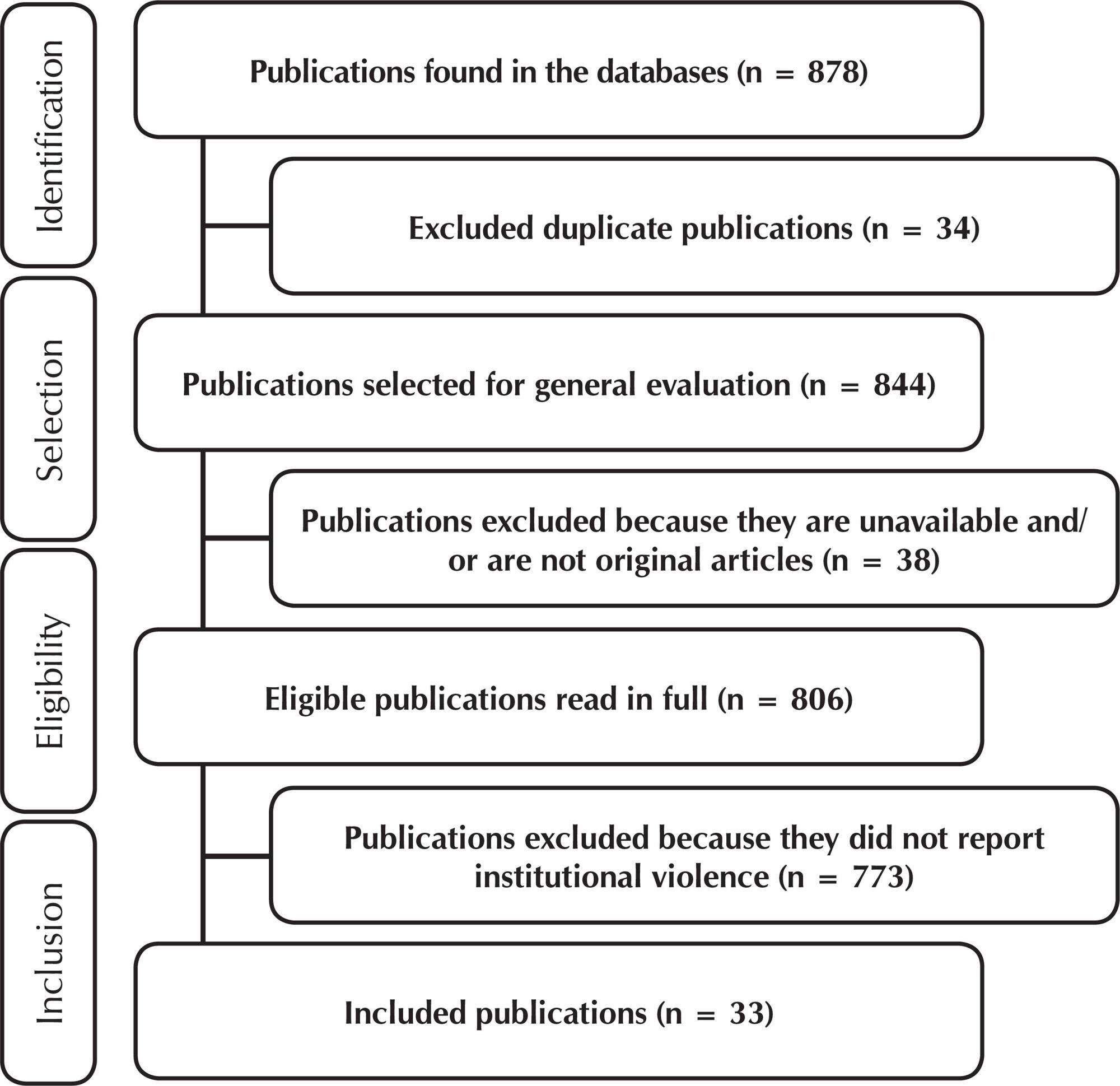
-
PESQUISA01/01/2018
Education practices: research-action with nurses of Family Health Strategy
Revista Brasileira de Enfermagem. 2018;71(3):1144-1151
Resumen
PESQUISAEducation practices: research-action with nurses of Family Health Strategy
Revista Brasileira de Enfermagem. 2018;71(3):1144-1151
DOI 10.1590/0034-7167-2017-0284
Visualizações0Ver maisABSTRACT
Objective:
to identify the factors that determine the implementation of educational practices of health promotion and to construct proposals to implement the educational actions of the nurses of the Family Health Units (FHU).
Method:
research-action in which individual interviews and focus group were conducted, with 17 nurses from 12 FHU in the city of Cruzeiro do Sul, Acre state, Brazil. The results were organized by the thematic analysis method.
Results:
the thematic units emerged from the analysis: dichotomy between knowledge and doing in the production of care and health; the nurse’s qualification for educational practices; and conditions favorable to health education practices.
Conclusion:
the thematic analysis showed that the educational practice is hampered by the high demand for care in the unit, lack of physical structure and professional qualification for health education. In the action phase, nurses and local managers agreed on actions to improve the quality of educational practices.
-
PESQUISA01/01/2018
Qualification of the family caregiver to the application of the Educational Technology in Health
Revista Brasileira de Enfermagem. 2018;71(3):1135-1143
Resumen
PESQUISAQualification of the family caregiver to the application of the Educational Technology in Health
Revista Brasileira de Enfermagem. 2018;71(3):1135-1143
DOI 10.1590/0034-7167-2017-0163
Visualizações0Ver maisABSTRACT
Objective:
To evaluate the changes in the participation of the family caregiver in the treatment of the hypertensive person with the application of the Educational Technology in Health (ETH).
Method:
Participant research carried out in a Primary Health Care Unit with 11 family caregivers (FC). The ETH was elaborated based on health education and applied in ten meetings between June and August 2016. We organized the results into categories.
Results:
FCs experienced learning experiences through the exchange of information, socialization of experiences, and linkage establishments. The FCs were encouraged to share their doubts and experiences, so that, supported by listening to the professional, they felt welcomed and determined to fulfill their role with hypertensive relatives.
Final considerations:
The changes that have taken place have been highlighted in the learning of FCs and their commitment to family and self-care, as well as to the conviction that the family environment is indicated to make these changes effective.
-
PESQUISA01/01/2018
Discursive archaeology: constituting knowledge of militant nurses in trade associations
Revista Brasileira de Enfermagem. 2018;71(3):1128-1134
Resumen
PESQUISADiscursive archaeology: constituting knowledge of militant nurses in trade associations
Revista Brasileira de Enfermagem. 2018;71(3):1128-1134
DOI 10.1590/0034-7167-2017-0277
Visualizações0Ver maisABSTRACT
Objective:
To analyze the constituting knowledge of militant nurses in trade associations.
Method:
Historical research, based on the oral history method, with a qualitative approach carried out with 11 nurses who are/were militants for professional issues since the 1980s in the state of Bahia. The data collected through semi-structured interviews were organized in the software n-vivo 10 and analyzed based on dialectical hermeneutics.
Results:
We identified pedagogical, administrative, public health, sociological, and trade union background knowledge as constituent of militant individuals.
Final considerations:
The constituting knowledge of militant nurses are inscribed in the Social Sciences, distanced from biomedical knowledge and power, pointing at ways for structuring nursing curricula. We identified the Brazilian Association of Nursing as a space for political formation.
-
PESQUISA01/01/2018
Coordination of health care with the community in the clinical management of tuberculosis
Revista Brasileira de Enfermagem. 2018;71(3):1122-1127
Resumen
PESQUISACoordination of health care with the community in the clinical management of tuberculosis
Revista Brasileira de Enfermagem. 2018;71(3):1122-1127
DOI 10.1590/0034-7167-2017-0255
Visualizações0Ver maisABSTRACT
Objective:
determine the coordination of Primary Health Care with community resources in the clinical management of tuberculosis.
Method:
descriptive study, of quantitative approach, with participation of one hundred health professionals. Part of a questionnaire was used in evaluating local institutional capacity for the model of chronic conditions care, adapted for tuberculosis care.
Results:
the coordination between health units, individuals with tuberculosis, and community organizations; the partnerships between institutions and local health councils/committees showed limited capacity. On the other hand, the component for the participation of the Community Health Agent presented more favorable capacity.
Conclusion:
the municipality has unfavorable capacity for coordination of health units and the community. It is reinforced the need to promote these coordinations in search of symptomatic cases in the communities, in the directly observed treatment, and in promoting the association between different social actors.
-
PESQUISA01/01/2018
Central venous catheter for hemodialysis: incidence of infection and risk factors
Revista Brasileira de Enfermagem. 2018;71(3):1115-1121
Resumen
PESQUISACentral venous catheter for hemodialysis: incidence of infection and risk factors
Revista Brasileira de Enfermagem. 2018;71(3):1115-1121
DOI 10.1590/0034-7167-2017-0047
Visualizações0Ver maisABSTRACT
Objective:
To measure the incidence of infection in short-term central venous catheter for hemodialysis and to identify the associated risk factors.
Method:
Prospective cohort study conducted in a teaching hospital from September 2015 to April 2016. Patients requiring central venous catheter for hemodialysis were included and data was collected through direct and systematic observation of the catheter insertion procedure by the researchers.
Results:
The final sample consisted of 69 patients, who used 88 catheters. The incidence of infection was 9.1%, and the risk factors were length of hospital stay and insertion of the catheter in the left femoral vein.
Conclusion:
The observation of the actions performed during the insertion of the catheter made it possible to identify the risk factors associated with infection, and the research protocol may have contributed to the reduction of infection rates.
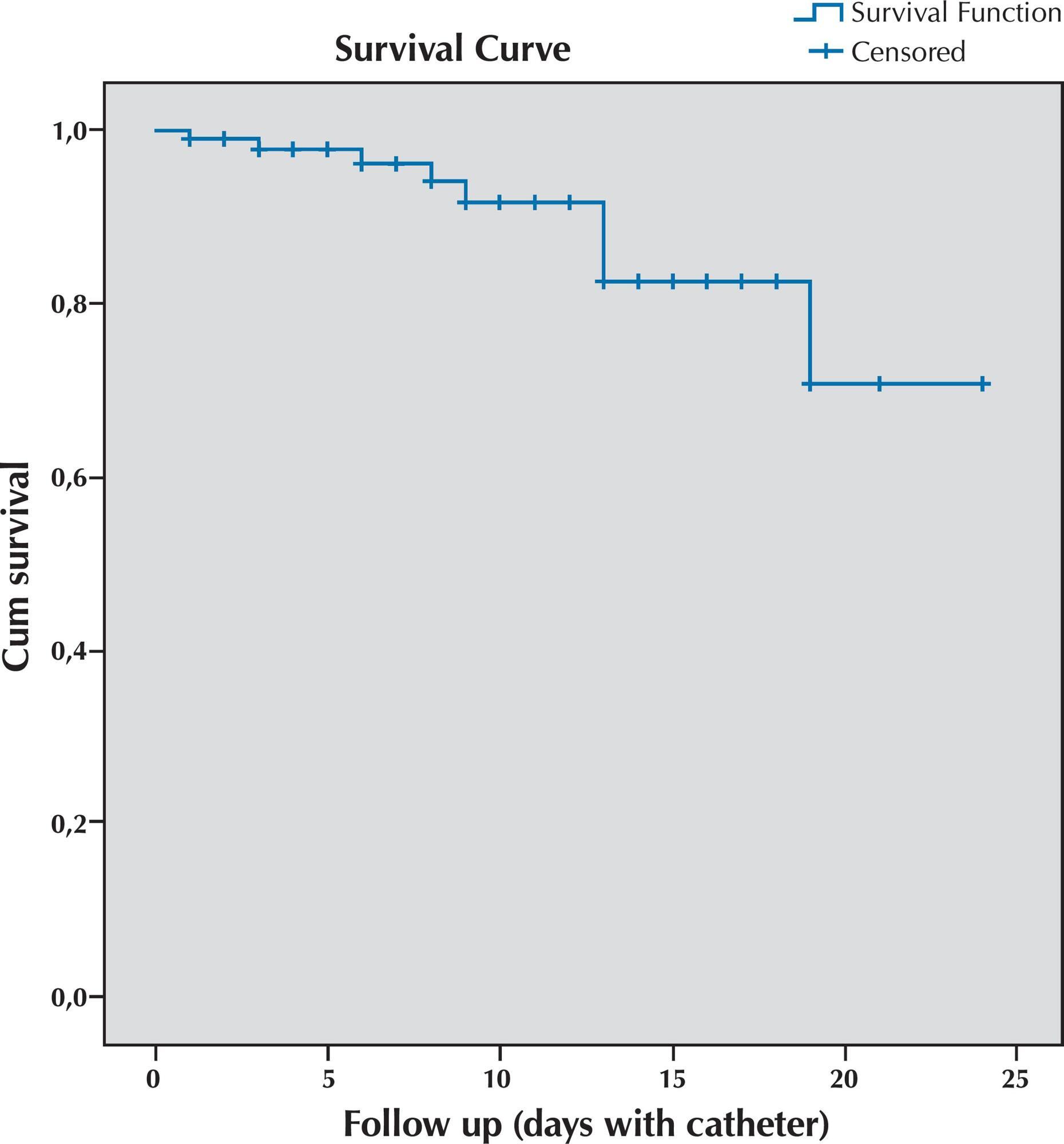
-
PESQUISA01/01/2018
Validation of a care protocol for the septic patient in the Intensive Care Unit
Revista Brasileira de Enfermagem. 2018;71(3):1106-1114
Resumen
PESQUISAValidation of a care protocol for the septic patient in the Intensive Care Unit
Revista Brasileira de Enfermagem. 2018;71(3):1106-1114
DOI 10.1590/0034-7167-2017-0312
Visualizações0Ver maisABSTRACT
Objective:
to elaborate and validate a protocol for the care of the nurse to the septic patient in Intensive Care Units (ICUs).
Method:
instrument validation study. Two steps were followed: instrument development and content validation according to the Delphi technique.
Results:
the validation of contents related to the nurse’s assistance to the septic patient in intensive care was initially composed of eighteen items analyzed by the evaluators/judges. From this, through the Content Validity Index (CVI), thirteen items with strong evidence of validation were identified, CVI = 0.79. Then the instrument was refined, being then composed of fifteen items, which in the second phase Delphi had a percentage of agreement above 84% for the variables pertinent to the protocol.
Conclusion:
the method was effective to validate the contents of a protocol for the nurse’s assistance to the septic patient in the ICU.
-
PESQUISA01/01/2018
Assessment of the care process with orthotics, prosthetics and special materials
Revista Brasileira de Enfermagem. 2018;71(3):1099-1105
Resumen
PESQUISAAssessment of the care process with orthotics, prosthetics and special materials
Revista Brasileira de Enfermagem. 2018;71(3):1099-1105
DOI 10.1590/0034-7167-2017-0031
Visualizações0Ver maisABSTRACT
Objective:
to assess potential failures in the care process with orthotics, prosthetics and special materials in a high-complexity hospital.
Method:
an intervention study conducted from March to October 2013. This process was assessed with the Failure Mode and Effects Analysis (FMEA) service tool. The data were analysed according to the risk and the corrective measures were defined.
Results:
no failure was classified as high risk and the corrective measures indicated as low and moderate risk had the following improvement initiatives suggested: standardize the material records in the information system; create a specific form to require materials; hire specialized technical personnel and create a continuous education program.
Conclusion:
all the suggested initiatives were implemented and helped to reduce the assistance risks for patients due to failures in this process. The actions increase safety levels and provide higher quality of service.
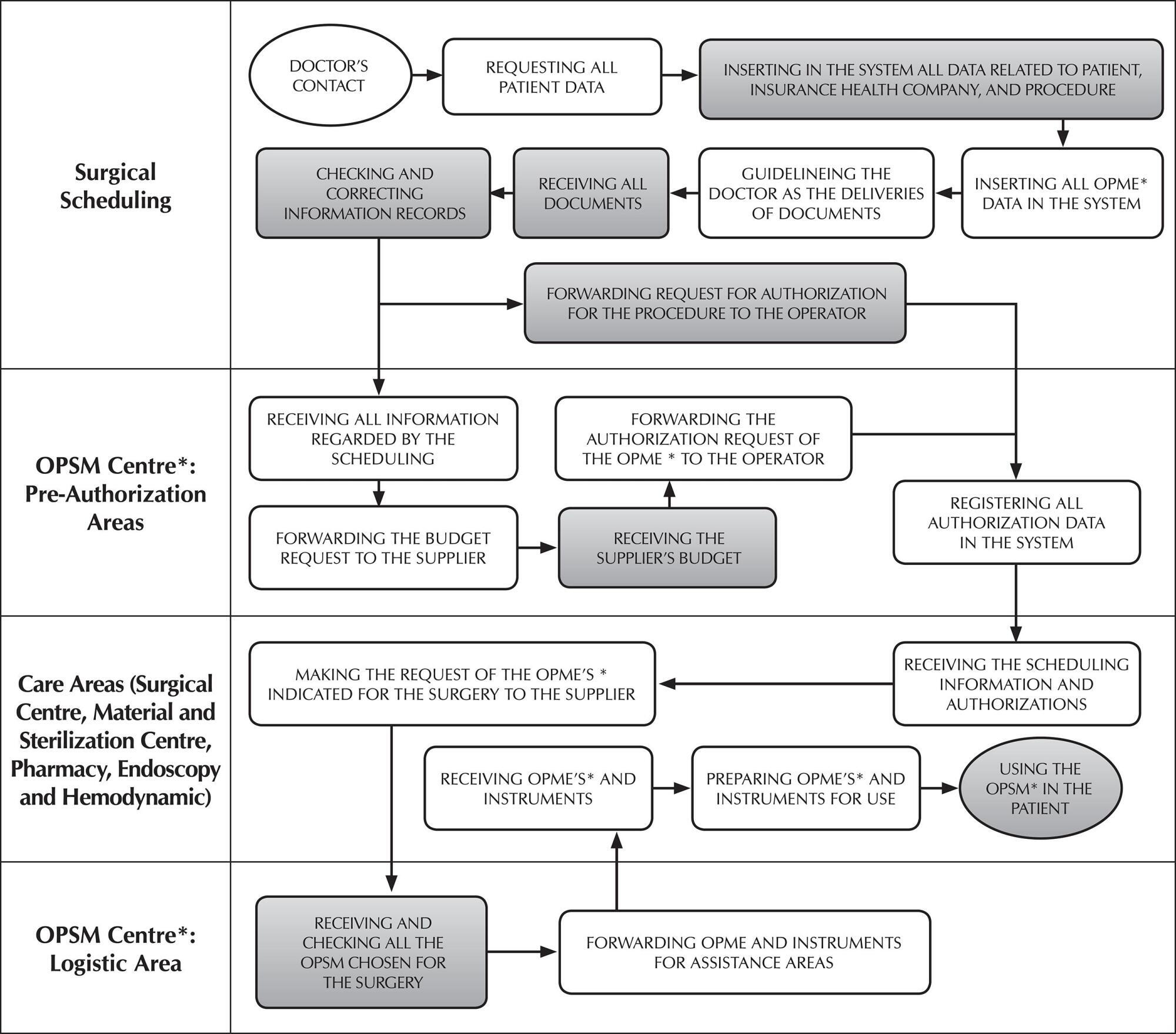
-
15/03/2021
Enfermería de Práctica Avanzada en Latino América y el Caribe: buscando su implementación
Revista Brasileira de Enfermagem. 2021;74:e74suppl601
Resumen
Enfermería de Práctica Avanzada en Latino América y el Caribe: buscando su implementación
Revista Brasileira de Enfermagem. 2021;74:e74suppl601
DOI 10.1590/0034-7167.202174suppl601
Visualizações0Las organizaciones de salud son cada vez más complejas y especializadas, en la búsqueda de optimizar sus estándares de calidad y seguridad, y poder responder a las crecientes necesidades de sus usuarios. Para enfrentar esta realidad los profesionales de salud necesitan adaptarse para responder a tiempo a los requerimientos del contexto sanitario. Por su parte, […]Ver mais -
11/06/2021
Prevention of facial injuries caused by personal protective equipment during the COVID-19 pandemic
Revista Brasileira de Enfermagem. 2021;74:e20201219
Resumen
Prevention of facial injuries caused by personal protective equipment during the COVID-19 pandemic
Revista Brasileira de Enfermagem. 2021;74:e20201219
DOI 10.1590/0034-7167-2020-1219
Visualizações0Ver maisABSTRACT
Objective:
Develop and validate a leaflet to guide health professionals in preventive measures related to injuries caused by the use of personal protective equipment during the COVID-19 pandemic.
Methods:
For the construction of the brochure, an integrative review was carried out in the main databases. The evaluation of the leaflet was made by 59 health professionals (nurses, physiotherapists, and doctors), using the Delphi technique.
Results:
In the first evaluation cycle, the items in the brochure were considered by the judges to be “inadequate” to “adequate”; the Content Validity Index was 0.80-1.0. After the adjustments suggested by the judges were implemented, the leaflet was sent back to the second evaluation cycle, in which all items were considered “adequate”, resulting in a Content Validity Index of 1.0.
Conclusion:
The developed brochure has content validity and can assist health professionals in preventing injuries caused by the use of personal protective equipment the developed brochure has content validity and can assist health professionals in preventing injuries caused by the use of personal protective equipment.
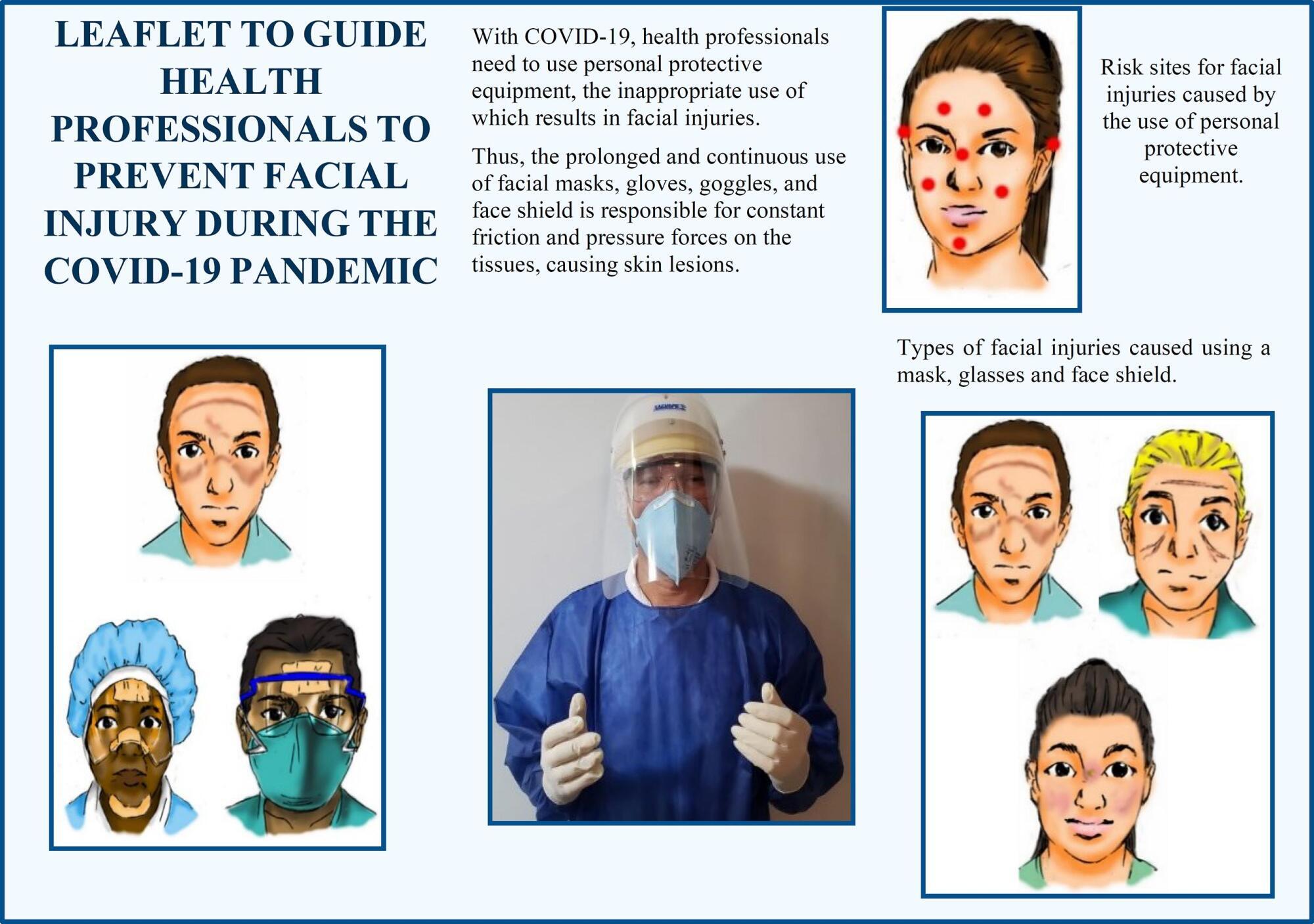
-
ARTÍCULO ORIGINAL22/04/2020
Atenção à saúde do homem: construção e validação de instrumento para consulta de enfermagem
Revista Brasileira de Enfermagem. 2020;73(3):e20190013
Resumen
ARTÍCULO ORIGINALAtenção à saúde do homem: construção e validação de instrumento para consulta de enfermagem
Revista Brasileira de Enfermagem. 2020;73(3):e20190013
DOI 10.1590/0034-7167-2019-0013
Visualizações0RESUMO
Objetivos:
elaborar e validar um instrumento de coleta de dados para consulta de enfermagem junto ao homem no contexto da Atenção Primária à Saúde.
Métodos:
estudo metodológico, desenvolvido em quatro etapas. A primeira consistiu na elaboração do instrumento, utilizando-se bases de dados e o modelo teórico de Dorothea Orem. Na segunda e terceira etapas, ocorreu a validação de conteúdo e aparência do instrumento por 23 juízes enfermeiros. Para avaliação, foi utilizado o Índice de Concordância. Na quarta etapa, foi realizado o teste piloto com 20 homens usuários da Atenção Primária à Saúde.
Resultados:
dos 145 indicadores elaborados, organizados e submetidos ao processo de validação, foram excluídos os itens com Índice de Concordância menor que 0,80. O instrumento final foi composto por 156 itens. Obteve-se o cálculo de Índice de Concordância global de 0,88.
Conclusões:
o instrumento final apresentou validade de conteúdo para a coleta de dados junto a homens no contexto da Atenção Primária à Saúde.
Palavras-chave: Enfermagem no ConsultórioEstudos de ValidaçãoSaúde do HomemSaúde PúblicaTeoria de EnfermagemVer mais -
28/05/2021
Are symptoms of depression and anxiety in nursing students associated with their sociodemographic characteristics?
Revista Brasileira de Enfermagem. 2021;74:e20200503
Resumen
Are symptoms of depression and anxiety in nursing students associated with their sociodemographic characteristics?
Revista Brasileira de Enfermagem. 2021;74:e20200503
DOI 10.1590/0034-7167-2020-0503
Visualizações0Ver maisABSTRACT
Objective:
to investigate symptoms of depression and anxiety and their association with the sociodemographic characteristics of undergraduate nursing students.
Methods:
a cross-sectional analytical study carried out with students from the Faculty of Nursing at Universidade Federal de Juiz de Fora from June to July 019. Data were collected through a sociodemographic questionnaire and the Beck Depression and Anxiety Inventories.
Results:
192 students participated, with a mean age of 21.44 (±3.56) years. 85.93% of participants were female. The mean depression score was 22.40 (±12.35), and anxiety was 17.56 (±11.98). There was a difference in the mean of the scales for sex and psychotropic drugs (p<0.05). Women presented moderate and severe classification for both scales. Severe symptoms prevailed among students from the 6th to the 10th semester (18.22%).
Conclusion:
there was an association between depression and anxiety symptoms related to gender and psychotropic drugs.
-
ARTÍCULO DE REVISIÓN19/10/2020
Efetividade de protetores cutâneos e calendula officinalis para prevenção e tratamento de radiodermatites: revisão integrativa
Revista Brasileira de Enfermagem. 2020;73:e20190815
Resumen
ARTÍCULO DE REVISIÓNEfetividade de protetores cutâneos e calendula officinalis para prevenção e tratamento de radiodermatites: revisão integrativa
Revista Brasileira de Enfermagem. 2020;73:e20190815
DOI 10.1590/0034-7167-2019-0815
Visualizações0Ver maisRESUMO
Objetivo:
analisar a efetividade de protetores cutâneos e da Calendula officinalis para a prevenção e tratamento de radiodermatites.
Método:
revisão integrativa, nas bases de dados CINAHL, Cochrane Library, Embase, MEDLINE/PubMed, IBECS, LILACS e Web of Science. A amostra final foi composta por cinco estudos, quatro pesquisas clínicas e uma pré-clínica. Foram realizadas a apreciação crítica e síntese narrativa dos achados dos estudos.
Resultados:
o protetor cutâneo Cavilon™ foi mais efetivo que Sorbolene (creme com 10% de glicerina) e menos efetivo que creme de Furoato de Mometasona. Calendula officinalis foi mais efetivo que Trolamina e ácidos graxos essenciais e menos efetivo que Ching Wan Hung® para a prevenção e tratamento de radiodermatite.
Conclusão:
os dados confirmam o potencial da Calendula officinalis na prevenção e tratamento da radiodermatite e apontam resultados promissores quanto ao uso dos protetores cutâneos, entretanto há necessidade de novas testagens quanto à efetividade de tais produtos.
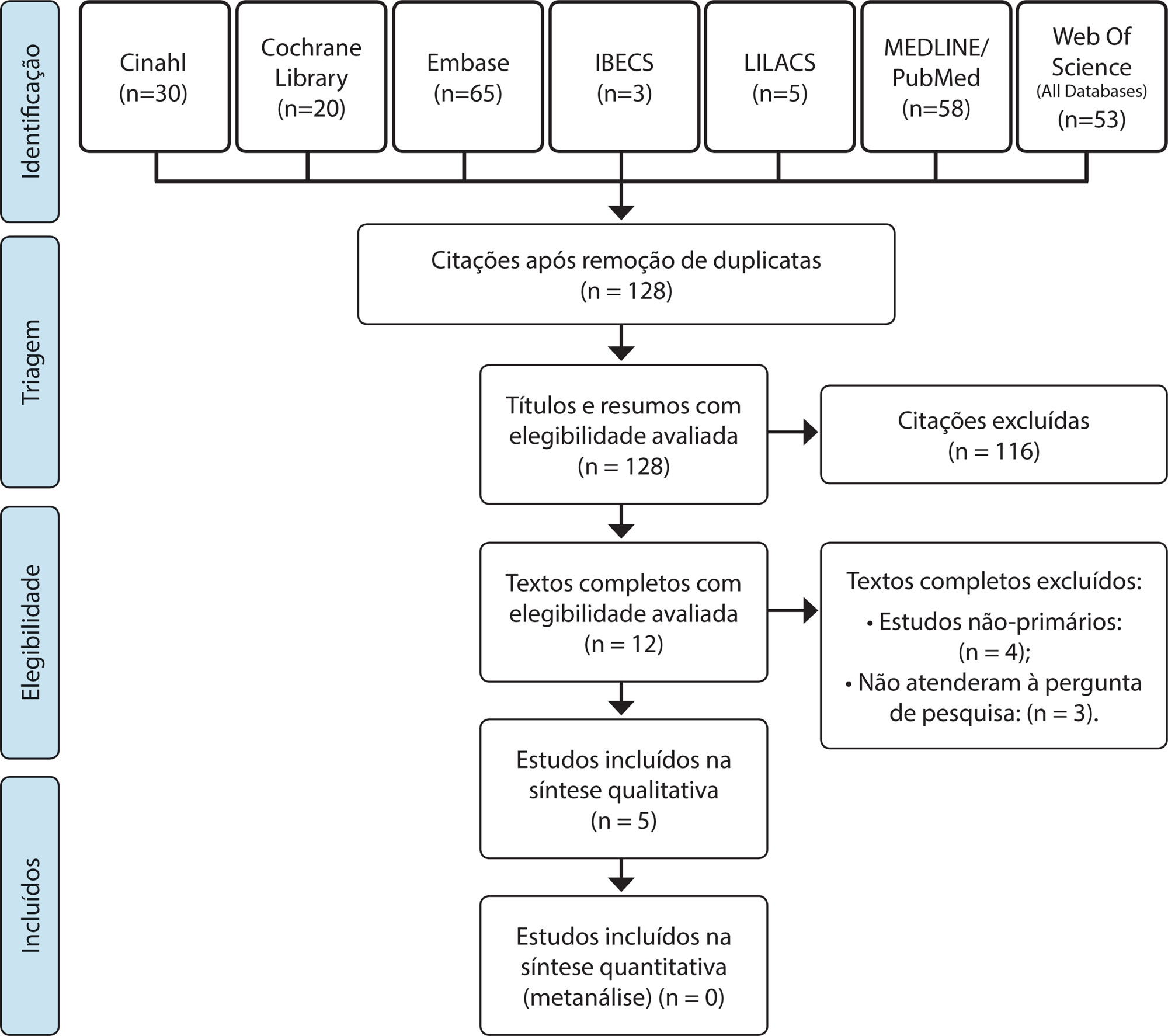
-
ARTÍCULO ORIGINAL21/10/2019
Child and adolescent violence: oral story of women who attempted suicide
Revista Brasileira de Enfermagem. 2019;72(6):1450-1456
Resumen
ARTÍCULO ORIGINALChild and adolescent violence: oral story of women who attempted suicide
Revista Brasileira de Enfermagem. 2019;72(6):1450-1456
DOI 10.1590/0034-7167-2017-0814
Visualizações0Ver maisABSTRACT
Objective:
To unveil expressions of intrafamily violence experienced in childhood and/or adolescence by women who attempted suicide.
Method:
This is a study with a qualitative approach based on Oral Story. Participants were ten women with a history of suicide attempt, who experienced intrafamily violence in childhood and/or adolescence. The research was carried out at the Center for the Study and Prevention of Suicide, linked to a Toxicological Information Center in the city of Salvador, Bahia, Brazil.
Results:
From the orality of women, the study allowed the emergence of the following representative categories of intrafamily abuse experienced in childhood and/or adolescence: psychological violence, rejection, neglect, physical violence and sexual violence.
Final considerations:
The study alerts to intrafamily violence as an aggravation related to suicidal behavior, offering elements that help in the identification of their expressions, which will raise awareness to suicidal behavior and consequently suicide prevention.
-
ARTÍCULO ORIGINAL07/12/2020
Sarcopenia screening in elderly in primary health care: nurse knowledge and practices
Revista Brasileira de Enfermagem. 2020;73:e20200421
Resumen
ARTÍCULO ORIGINALSarcopenia screening in elderly in primary health care: nurse knowledge and practices
Revista Brasileira de Enfermagem. 2020;73:e20200421
DOI 10.1590/0034-7167-2020-0421
Visualizações0Ver maisABSTRACT
Objective:
Describe the knowledge and practices of the Primary Health Care nurse on sarcopenia screening in the elderly.
Methods:
Qualitative study conducted with 24 Primary Health Care nurses. The data was collected through semi-structured interviews, recorded and later transcribed. The speeches were grouped in thematic categories, later analyzed, supported by Paulo Freire’s reference.
Results:
The findings showed that the primary care nurses’ knowledge of sarcopenia screening in the elderly was incipient and fragile. This reality is reflected in a gap in practice, although some instruments already require the registration of characteristics indicative of sarcopenia, such as the evaluation of the calf circumference.
Final Considerations:
The need to train nurses to perform sarcopenia screening and to implement a promotional and preventive care plan, which will result in improving the quality of life of the elderly assisted in Primary Care, was highlighted.
Búsqueda
Buscar en:
Nuvem de Tags
Adolescente (85) Atenção Primária à Saúde (239) COVID-19 (91) Criança (91) Cuidados de Enfermagem (269) Educação em Enfermagem (151) Educação em Saúde (139) Enfermagem (930) Enfermagem Pediátrica (86) Estudantes de Enfermagem (77) Estudos de Validação (131) Família (87) Idoso (208) Promoção da Saúde (99) Qualidade de Vida (104) Saúde do Trabalhador (86) Saúde Mental (145) Saúde Pública (82) Segurança do Paciente (150) Tecnologia Educacional (100)



